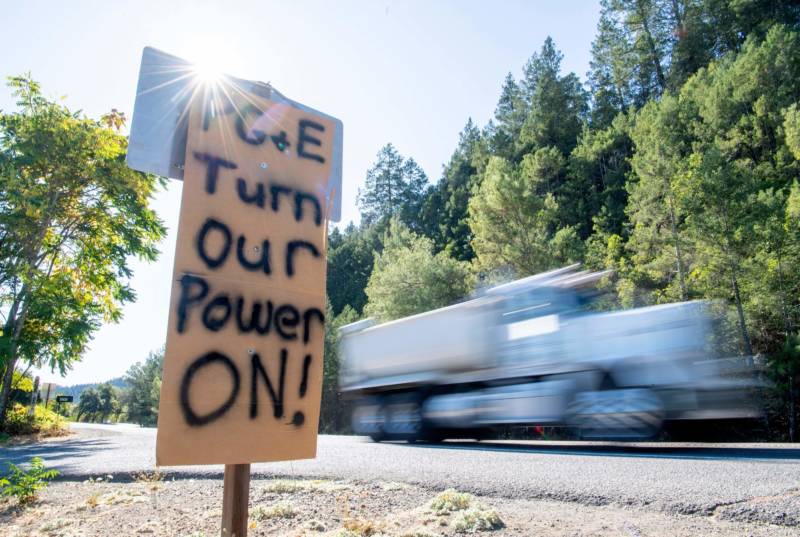Updated: Friday, Oct. 11, 12 p.m.
After cutting power to large swaths of Northern California this week, PG&E said Thursday it would begin inspections of transmission lines in an effort to restore power to hundreds of thousands of customers as weather conditions improved.
On Friday morning, the utility reported that power had been restored to nearly 493,000 customers — about two-thirds of those impacted by the shutoff — including full restoration in Humboldt, Siskiyou and Trinity counties. About 245,000 customers remained without power, she said.
In the Bay Area, power had been restored to nearly 84% of customers who lost it, according to PG&E spokeswoman Tamar Sarqissian. More than 42,000 customers, primarily in Napa and Sonoma counties, were still without power.
A customer denotes any household, business or other entity that gets power from PG&E, so the actual number of people who have been impacted by the shutoffs is actually far greater than the number of customers listed. For instance, one customer could represent a household of four people.
The shutoffs, which began early Wednesday and continued Thursday, were aimed at reducing the risk of wildfires that could be sparked by electrical equipment, amid high winds and dry conditions.
At a press conference Thursday evening, Gov. Gavin Newsom lambasted PG&E, saying the decision to cut power was the result of the utility not upgrading its infrastructure.
"What's happened is unacceptable," Newsom said. "It's happened because of neglect. It's happened because of decisions that were deferred, delayed or not made by the largest investor-owned utility in the state of California, one of the largest in the nation."

